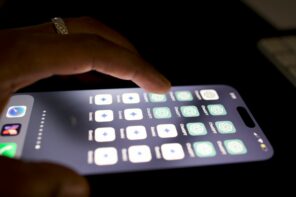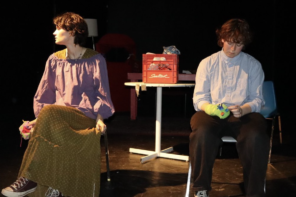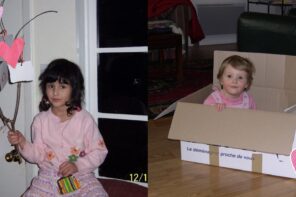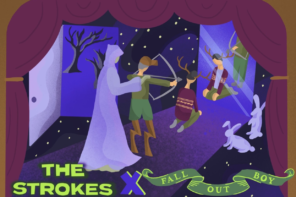Last month, the Portrait of Edmond Belamy, a painting entirely generated by Artificial Intelligence, was sold for the whopping sum of 432,000 USD. The piece was created by feeding an algorithm thousands of portraits spanning more than seven centuries. This is only the latest addition to the growing trend of algorithm-generated artistic products, from AI-made music to entire novellas. While the quality of these creations has often dwarfed when directly rivaled with human-crafted art, the simple idea of computer-based creativity and artistic taste is staggering.
The Portrait of Edmond Bellamy is part of eleven AI-generated paintings of the fictional Belamy family, and has marked history as the first piece of machine-made art to come to auction. With such a monsterous price tag, questions about the impact and real value of AI-generated art are naturally raised.
At a time when artificial intelligence is on pace to replace various practical jobs in fields such as construction and factory work, creativity-based professions have always been perceived as remotely safe from the AI takeover. However, machines are now able to generate artistic items close to what a human mind would create, to the point where finding discernable differences between the two is becoming increasingly difficult. Inherently, the ability of AI to replicate creativity leaves the door open for artificial and uber-artists, protected from fatigue and running on near-limitless inspiration, generating art in rapidity and numbers never seen before. While the fear of replacement can be felt, the reality is that such algorithms are far from being completely independent creative machines. Don’t get me wrong, the artwork is generated by the machine – but only after a coder has created the algorithm and fed it a defined set of artistic information. Even though these programs are still only gears in entire mechanisms through their dependence on human interference, the real value of AI-produced art is questionable.
Inherently, the ability of AI to replicate creativity leaves the door open for artificial and uber-artists, protected from fatigue and running on near-limitless inspiration, generating art in rapidity and numbers never seen before.
While the Portrait of Edmond Belamy was the first painting of its type to be commercialized, its price tag can seem extreme for a piece of art that seemingly lacks actual reflection and artistic consideration. At the end of the day, the actual value of art is, and always will be, what people actually want to pay for it – the high sale price could be linked to the historic value of the painting, as the first of its kind. However, such a transaction may have an unprecedented impact: artistic craft could become a mechanic process, produced in thousands and tailored for profit. While this could affect the real value of art per se, traditional artistic pieces could gain more recognition, in comparison with their AI-generated peers. This may still represent a setback through the reduction of art to a simple algorithmic operation, putting hundreds of years of artistic celebration and acknowledgement into question.
Although AI-crafted artistic pieces’ impact on art’s status and value is potentially substantial, said influence depends only on the public’s perception of these progressive products. It can be reasonably argued that the origin of artistic items does not matter, as long as it looks, sounds, and feels like ‘real’ art. If an AI-generated painting has no discernable difference with a human-made counterpart, why place importance on whether it originated from neurons or lines of code? Some people appreciate art for the intricate thought process or skillful technique behind it, others solely value its sensual beauty. Innovation is often wildly criticized and debated, but at the end of the day, it’s simply a question of choice and taste.
A future where AI will be an integral part of both creative and mechanical activities is worrying, but plausible. For now, humans are still an inherent part of the process loop and art-generating algorithms are still far from being sentient and independent entities. As a result, the entire mechanism that leads to artificial art should be approached more as partnership than outright destruction of decades of properly established artistic principles. As recently stated by Ahmed Elgammal, director of the AI and art lab at Rutgers University, the entire process should be seen as a collaboration between two artists – one human, one a machine. Perceiving such an unusual combination as an alliance is conciliatory: algorithms and traditional artists are not exclusive of one another. After all, digital instruments have given birth to new musical horizons, but not made classical music irrelevant. AI criticism is rightfully founded, but coexistence with such untraditional tools should be encouraged.
For now, humans are still an inherent part of the process loop and art-generating algorithms are still far from being sentient and independent entities.
Christie’s, the British auction house behind the sale of the Portrait of Edmond Belamy, cleverly raised the point that “AI algorithms […] tend to model the course of history – as if […] the whole story of our visual culture was ‘a mathematical inevitability’”. While such claims can sound frightening, the reality is that fully AI-based creativity is now imaginable. Today, computer programs can even generate perfume by combining fragrance formulas based on their popularity. While this seems exciting and futuristic, it does raise many questions:from the ownership of these artistic items, to their real value, to their impact on the artistic industry as a whole. These concerns are based on reasonable grounds, but whether you like it or not, AI-generated art is slowly incoming. For now, all that can be done is embrace the Portrait of Edmond Belamy as an alliance between two worlds, an artificial and biological symbiotic collaboration.








